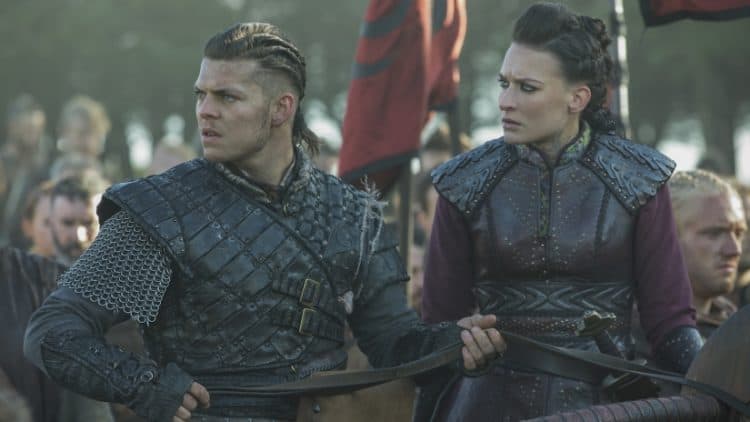
Season 5 of Vikings is set to come to a close at the end of January of 2019. This is rather remarkable considering that the show started up in 2013, meaning that it is one of the most successful shows that can be found on the History Channel. With that said, Vikings has changed a fair amount over the course of its existence, which should be obvious to people who have been following it since the first season.
How Has Vikings Changed Since the First Season?
For starters, Vikings is no longer centered on Ragnar Lodbrok but rather on Ragnar’s sons, who come from very different sources. In short, Ragnar was very much a legendary figure, as shown by how the Tale of Ragnar Lodbrok can be considered a sort of follow-up to the Volsunga Saga. After all, Ragnar’s wife Aslaug was the daughter of Sigurd and Brynhildr, who was raised by peasants who had murdered her foster father but nonetheless managed to get married to a king by showing up before him biting an onion, wearing a fishing net, and accompanied by a dog in response to his conditions. In other words, Ragnar might have been a hero out of legend, but Ragnar’s wife Aslaug was literally a fairy tale heroine, particularly since the story claims that she possessed incredible magical powers as well.
Meanwhile, Ragnar’s sons come much, much closer to being historical figures. Granted, their supposed relationship to Ragnar remains uncertain for the simple reason that we don’t have a lot of sources for the period in which they lived. However, there can be no doubt about the fact that at least some of them were real people who lived in the real world, not least because the Great Heathen Army was a very real force that managed to tear through the Anglo-Saxon England of the 9th century. As a result, while Ragnar’s sons are still the subjects of legends, there is a lot more historical information that can be turned up for them.
Summed up, it should be clear that the transition from Ragnar to Ragnar’s sons has had a lot of consequences for Vikings as a show. For starters, the start of Ragnar’s story was relatively small-scale, seeing as how it was focused on him becoming a leader of raiders. Meanwhile, the stories of Ragnar’s sons start with them being at the head of armies because they are the inheritors of a man who carved out a kingdom of his very own. On top of this, it should be mentioned that the characters are both very similar and very different from one another. In fact, there are some people who have outright claimed that each of Ragnar’s sons serves as an embodiment of Ragnar’s characteristics. Combined with the fact that Ragnar’s sons are different people with different priorities, this makes for a very different narrative setup when compared to their father. Suffice to say that this makes for very different outcomes, which contribute to the new feel of the show.
With that said, if some things have changed, other things have remained the same. Vikings has never been the most historically-accurate show that can be found out there, as shown by the dozens and dozens of articles complaining about its lack in this regard. Unfortunately, even though Vikings can now make more use of historical sources, it remains unapologetically itself, though judging by the viewership numbers, this doesn’t seem to have hurt it much for most of the interested individuals out there.
Final Thoughts
Regardless, it will be interesting to see how Vikings will continue to change as time passes. The show creator has stated that he wants to cover the Norse settlement of Vinland, which refers to the stretch of the North American coast that was explored by members of said culture. With that said, the more that some things change, the more that other things stay the same. After all, the Norse settlement of Vinland didn’t start up until the 11th century, meaning that there is a good chance that we will be seeing some of the show’s famous time compression shenanigans. Something that promises to make for a lot of fun as well as a lot of opportunities to poke fun.
 Follow Us
Follow Us





